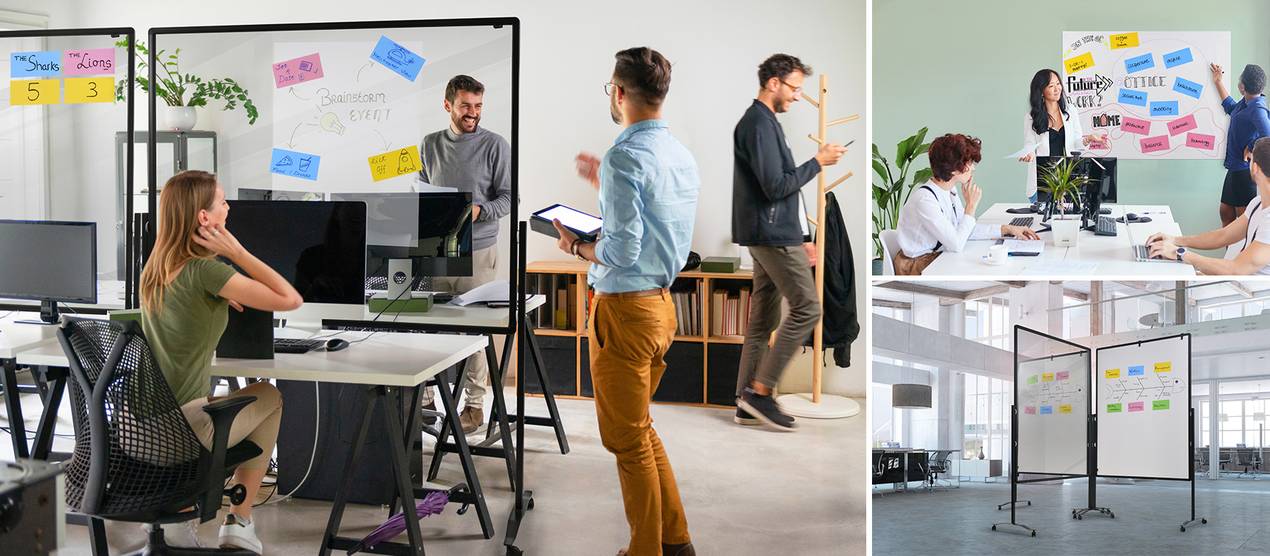
In the course of 2020, where and how we work has changed drastically due to COVID-19. Most of us were obliged to set up their home office in no time and work from home for months in a row. Before COVID, the office was seen as critical to productivity, culture and winning talent. Many companies transformed their office into large inspirational open-plan offices. Employees went from fixed to flexible workplaces. Seat cushions and huddle rooms were added and also fun activities were introduced, such as coffee corners or sport rooms. Basically everything was done to bring people closer together. But where do we stand now? What trends do we see regarding collaboration and ‘working apart together’? Here is an overview of three major collaboration trends that we see for 2021.
Trend 1 - Collaboration at a (safe) distance
We believe that successful collaboration at a distance is key moving forward. This distance can be 1,5 m when working in the same space with others, but it can also be 1.500 km or more when collaborating remotely. Being able to bridge this distance is what will make teams successful on the short and long term.
Right now, many companies work hard to rearrange their office spaces so that employees feel safe enough to return to the office once the COVID-19 situation is improving. Here, it is of course extremely important that there is more personal space for each employee, for example by creating a safe setup with desk dividers and divider boards. With these solutions, you can still have creative brainstorm sessions and work in the same space with your team.
Another important aspect is that people have tools at hand to make a planning, sketch an idea or have a brainstorm – either face-to-face, via phone or via video conference. Being able to visualise a complex planning or a new idea can make a huge difference regarding the effectiveness and efficiency of distributed teams.
Trend 2 – Offices as social hubs
When looking at the future of offices, it is very likely that for a lot of companies, the office is transforming into a ‘social hub’. In this social hub, employees will meet, connect, have brainstorm sessions and follow trainings. The main reason for this is that it is expected that a large number of employees will continue to work from home several days a week.
As we work from home more often, the office will most likely not be the place where you always work at your desk from 9 to 5. You rather come to the office to meet, follow a training, organize events or be creative together. Because, in essence, while a lot of meetings can perfectly be held via video conference - we still need to interact and exchange ideas with each other face-to-face. We are not made to communicate 24/7 via our digital screen. That's why a lot of future offices will have a more flexible setup with much more social spaces and creative spaces.
Trend 3 - Flexible spaces
In the new office layouts, there will be more flexibility than ever before. Desks will be used more flexibly and offices will hold a lot of open spaces, so they can be divided to suit different tasks and meetings. In many companies, a standard office setup with only (fixed) desks will become a thing of the past.
As mentioned above, the office will become a social hub with a need for more flexible (work)spaces. So flexible that you can also easily turn your workspace into an event space. This of course requires flexible equipment such as rolling tables and mobile writing surfaces, which allow for maximum flexibility. Need space for a large brainstorm session? Just roll away the unnecessary furniture and set up your event space in no-time.